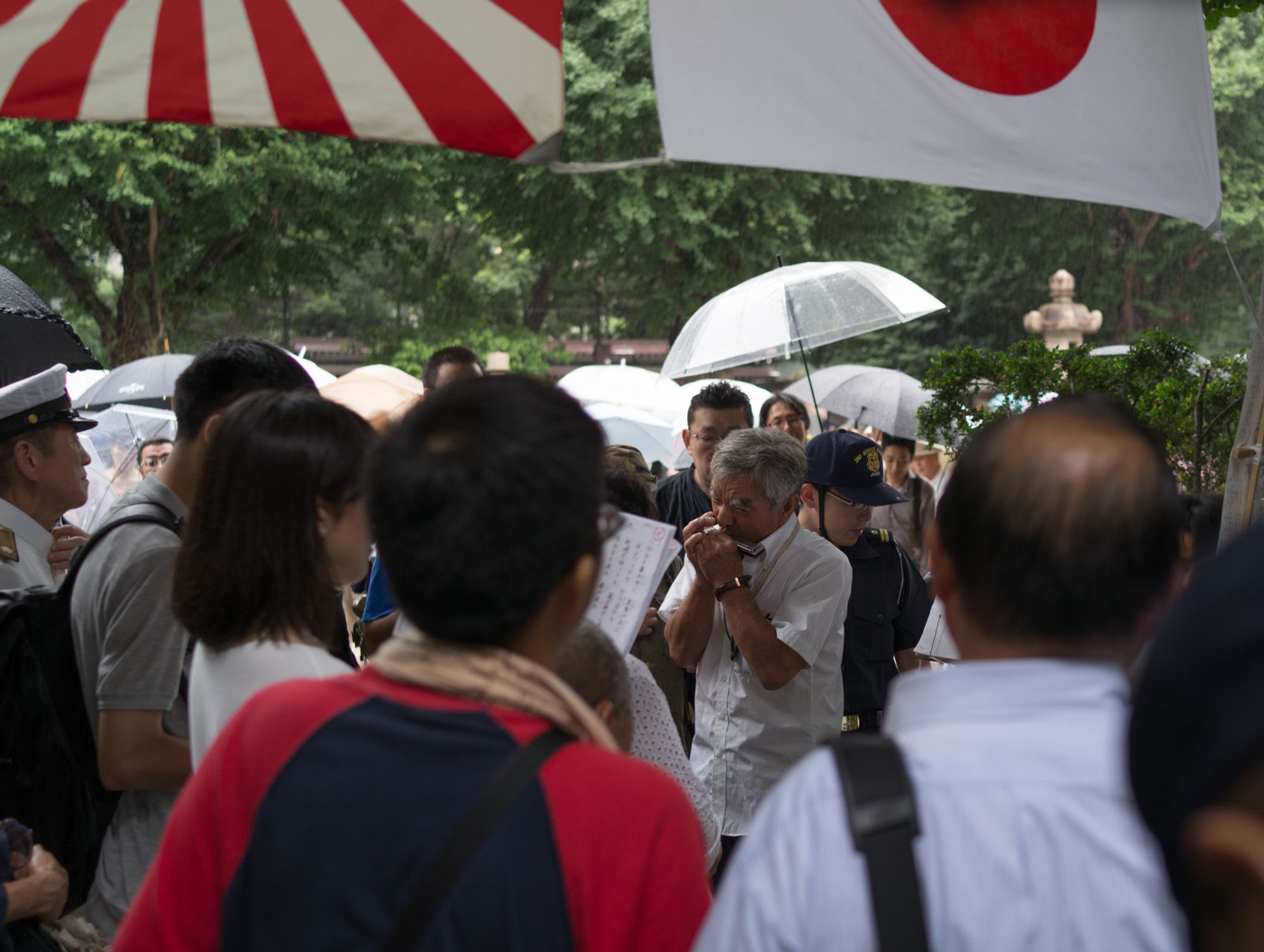
On the 72nd anniversary of Japan’s surrender in World War II, I visited Yasukuni Shrine.
Yasukuni Shrine commemorates soldiers who fought and lost their lives in service of Japan. It is also where their souls are enshrined, resting peacefully for eternity.
After World War II, the United States imposed the separation of church and state onto Japan. The shrine, previously ran by the government, had to become secular or break off into a private institution. The government chose the latter, and since then, the shrine has been owned and operated by a ultra right-wing nationalist group. The shrine is now also home to a revisionist history museum.
In the 70s, priests secretly enshrined the souls of a thousand war criminals, including those directly responsible for planning and ordering atrocities in WWII. Enshrinement effectively erased their sins and their souls are now honored alongside other servicemen and women.
As a result, Yasukuni Shrine has since been mired in controversy. Japan is a pacifist country now, with its constitution outlawing war and a proper military.
As such, many Japanese oppose the enshrinement, seeing it as a step backwards to Japan’s imperialist past. Asian countries, having been victims of Japan’s war crimes, see the shrine as a celebration of Japan’s actions in the war and a lack of remorse.
Every once in a while, Prime Minister Shinzō Abe and his ruling party will visit the shrine as a way to please their nationalist and yakuza friends. On this anniversary day, Abe sent members of his cabinet there on his behalf to avoid souring relations with China and South Korea, as he sought to work with them on the North Korean issue.
The anniversary is a special day that draws many visitors. As such, the number of political activists has also increased. They lined the streets from the subway exit all the way to the shrine’s entrance.
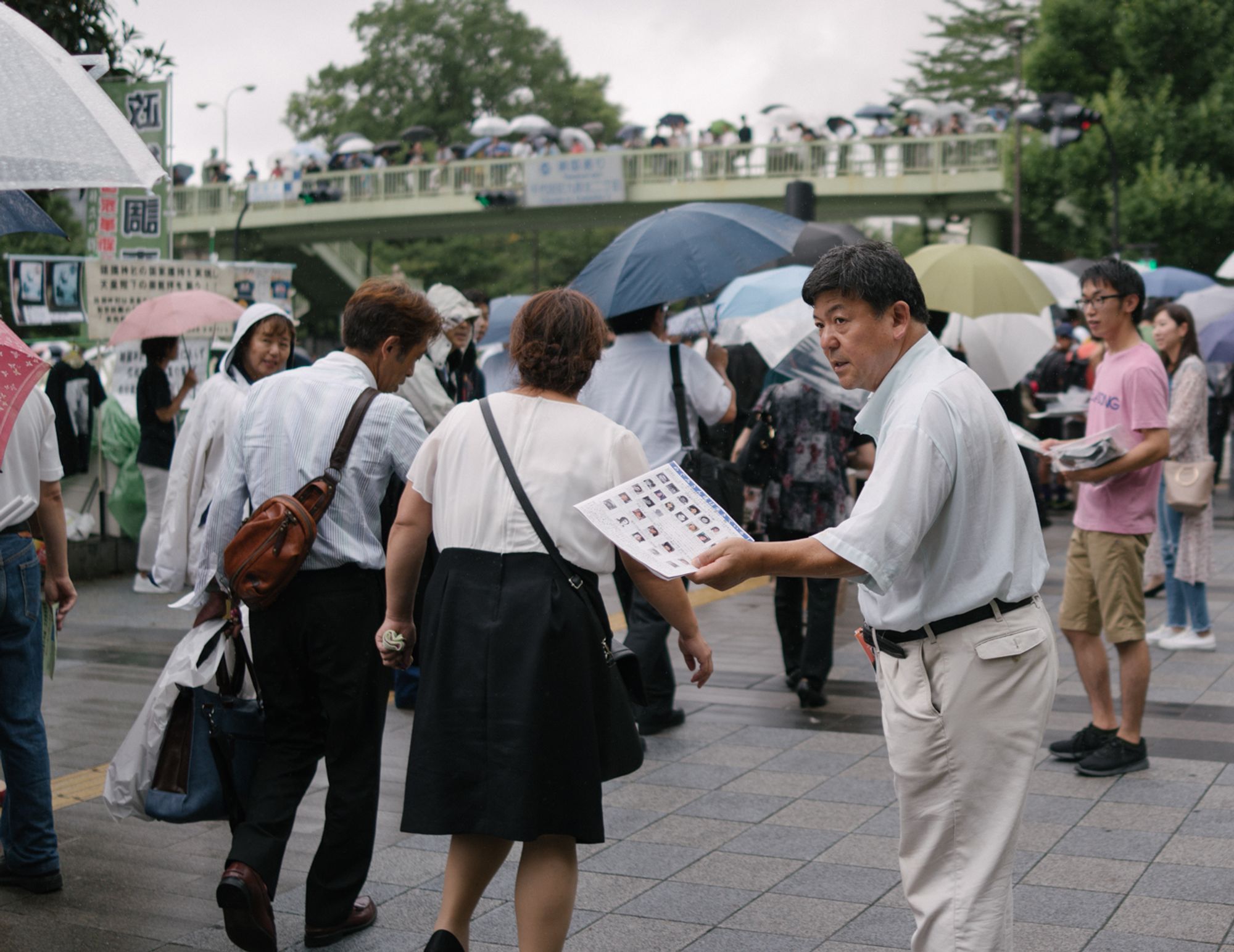
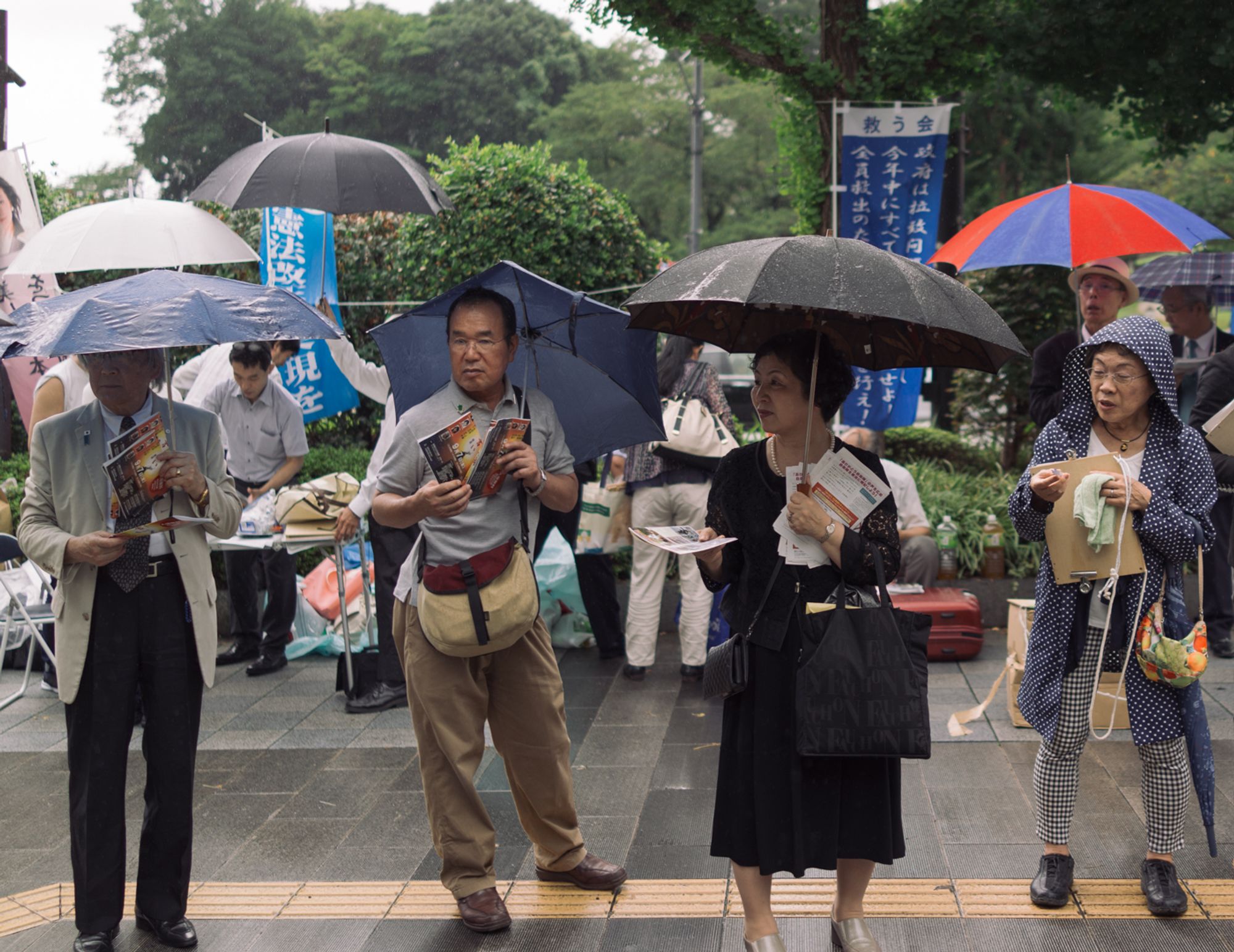
Some were anti-China, some were pro-Taiwan, and others were advocating for domestic issues.
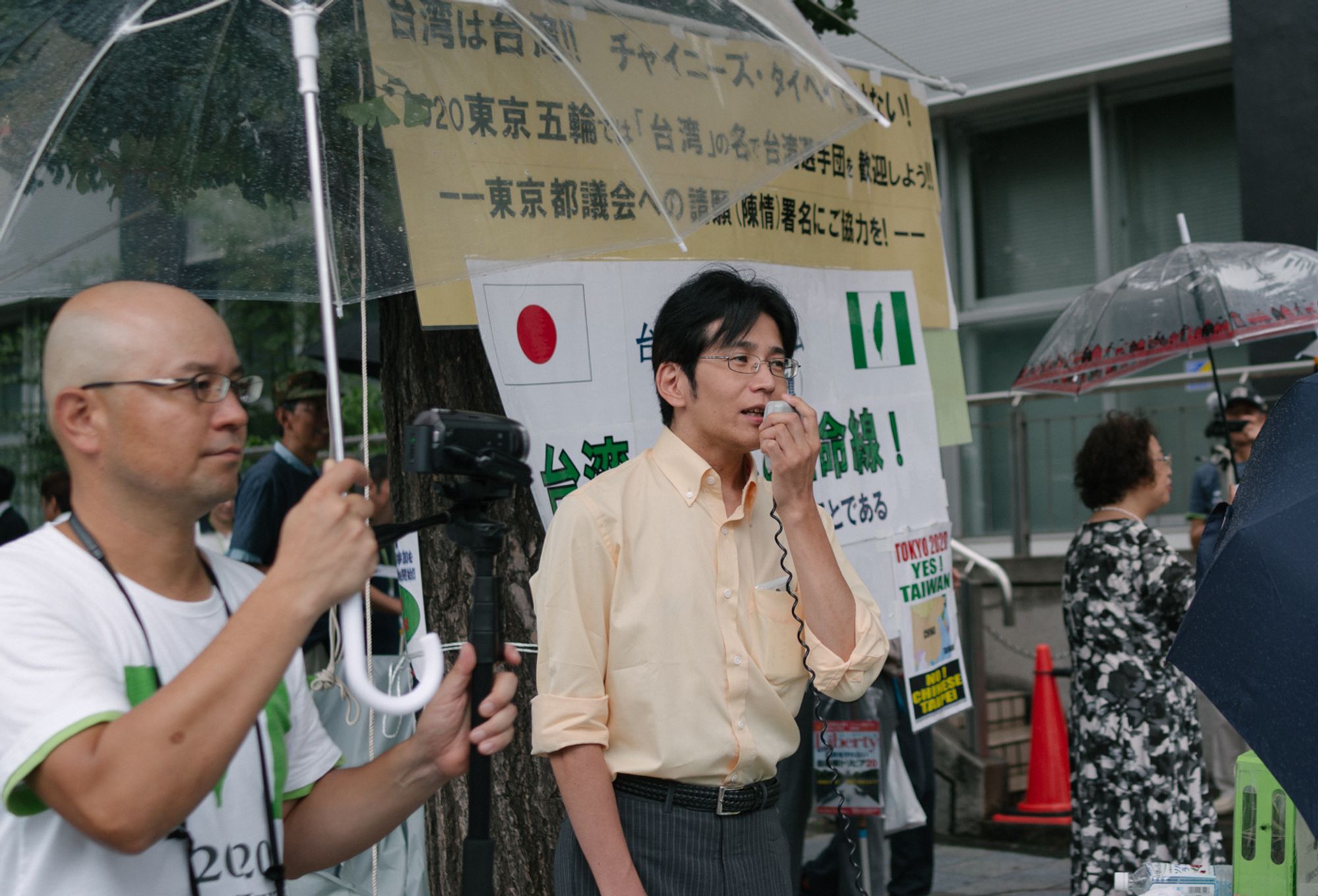
In front of the Yasukuni entrance, someone had started a poll asking whether there will be a crisis with North Korea, whether Japan should expand the powers of its military, and whether Japan should possess the ability to conduct pre-emptive strikes. As you can see, the answers are overwhelmingly yes, but there’s probably some sample bias in asking this crowd as well.
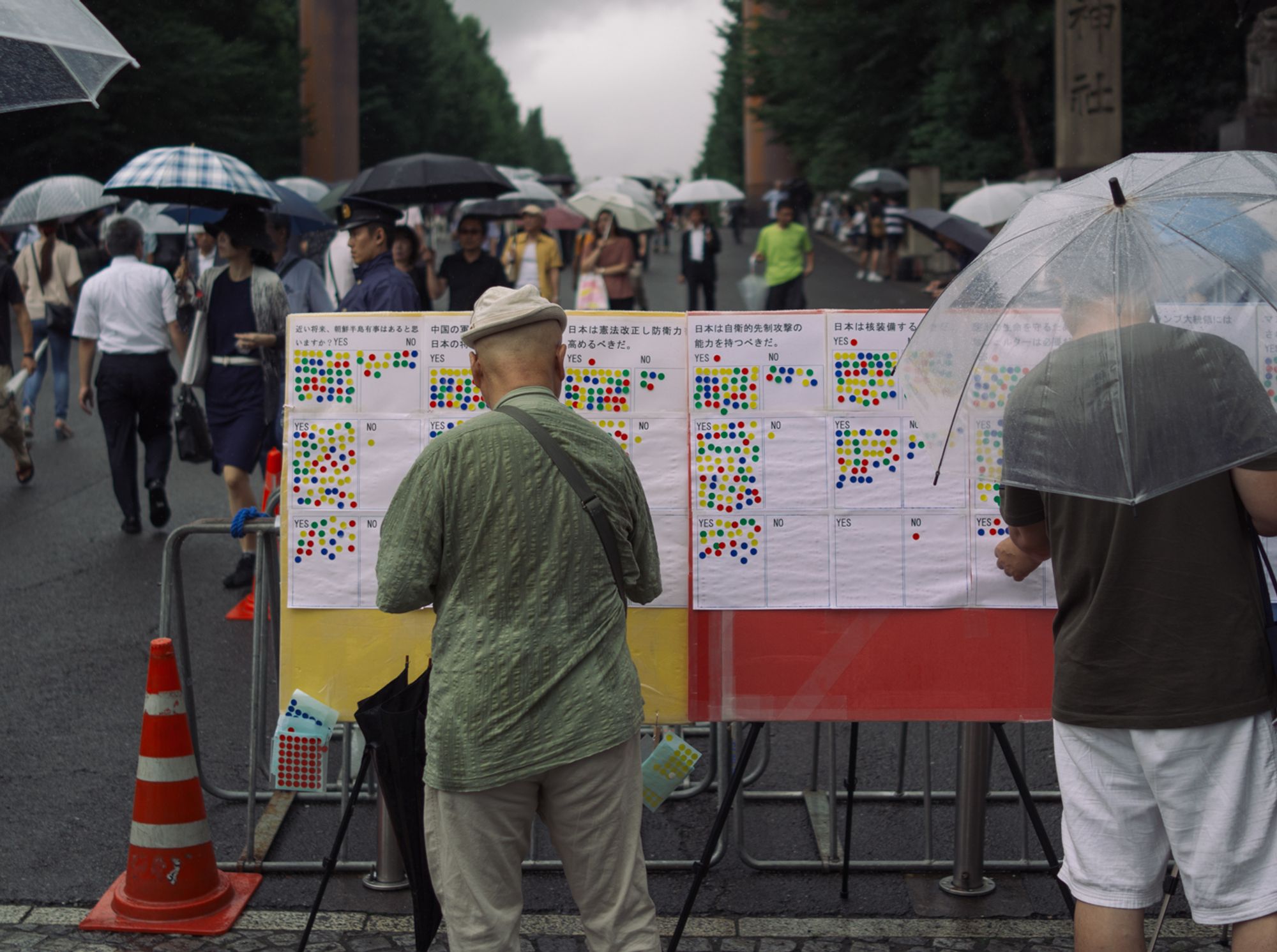
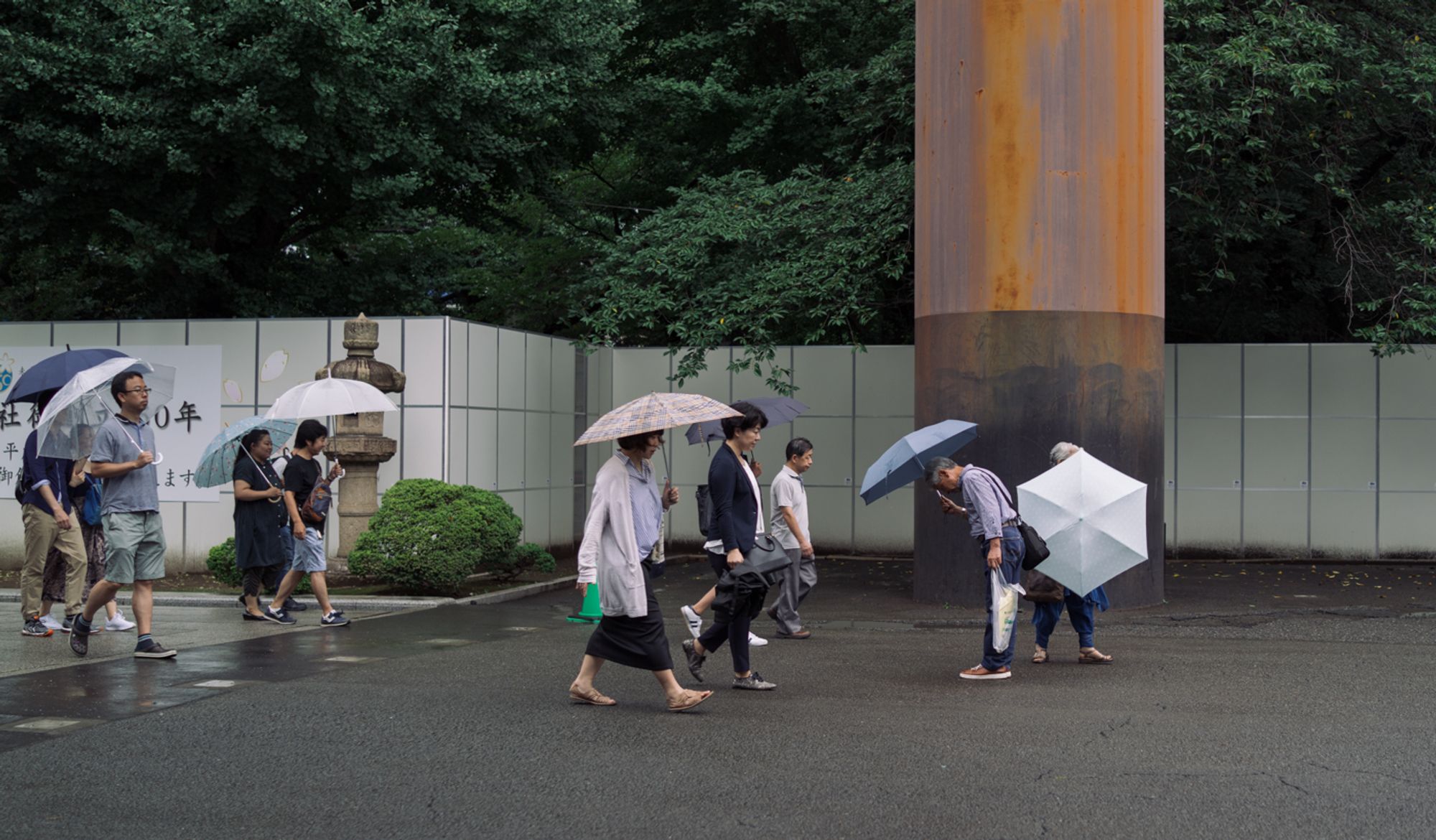
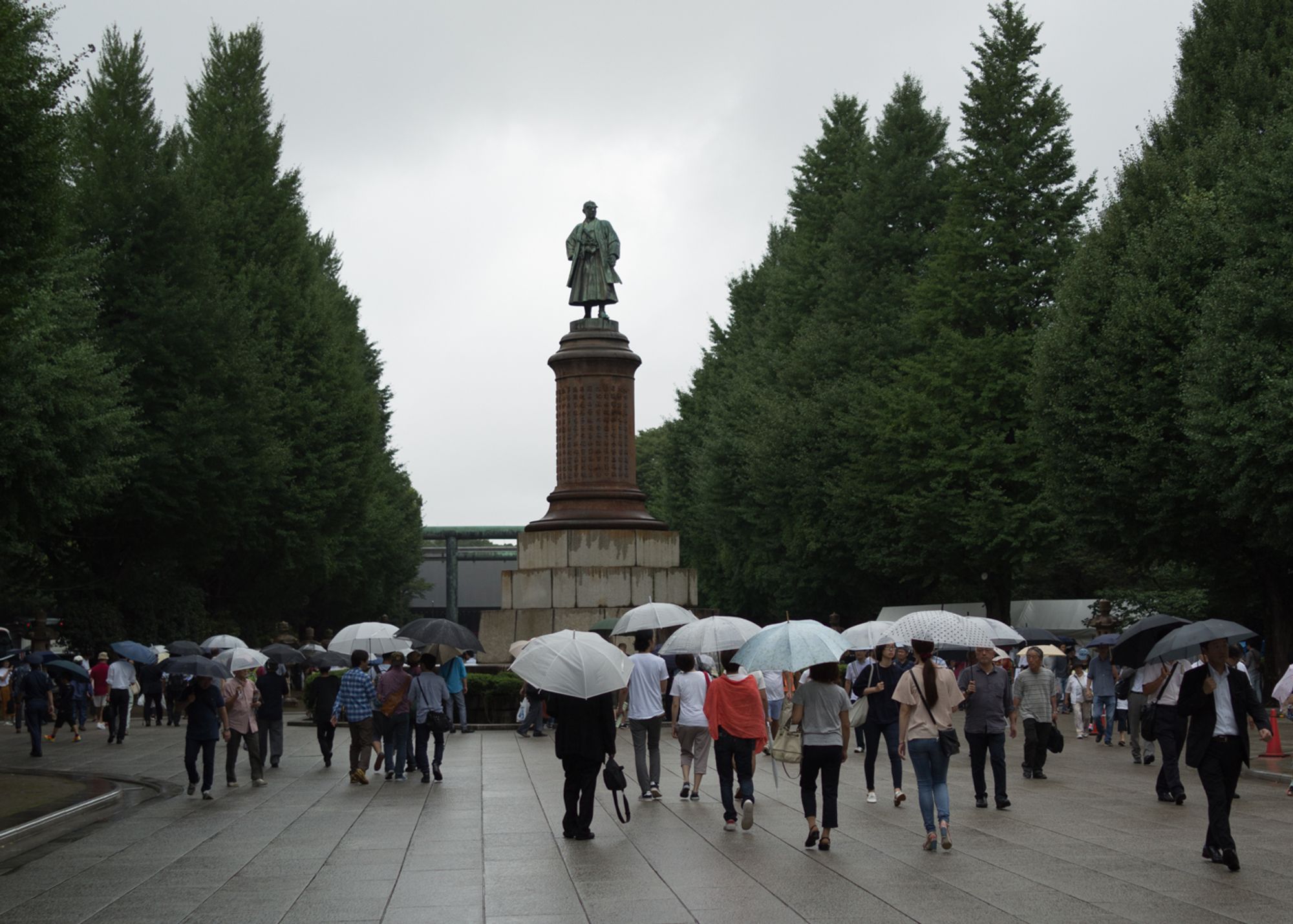
There was quite a bit of police presence as there was an event of some sort happening that day.


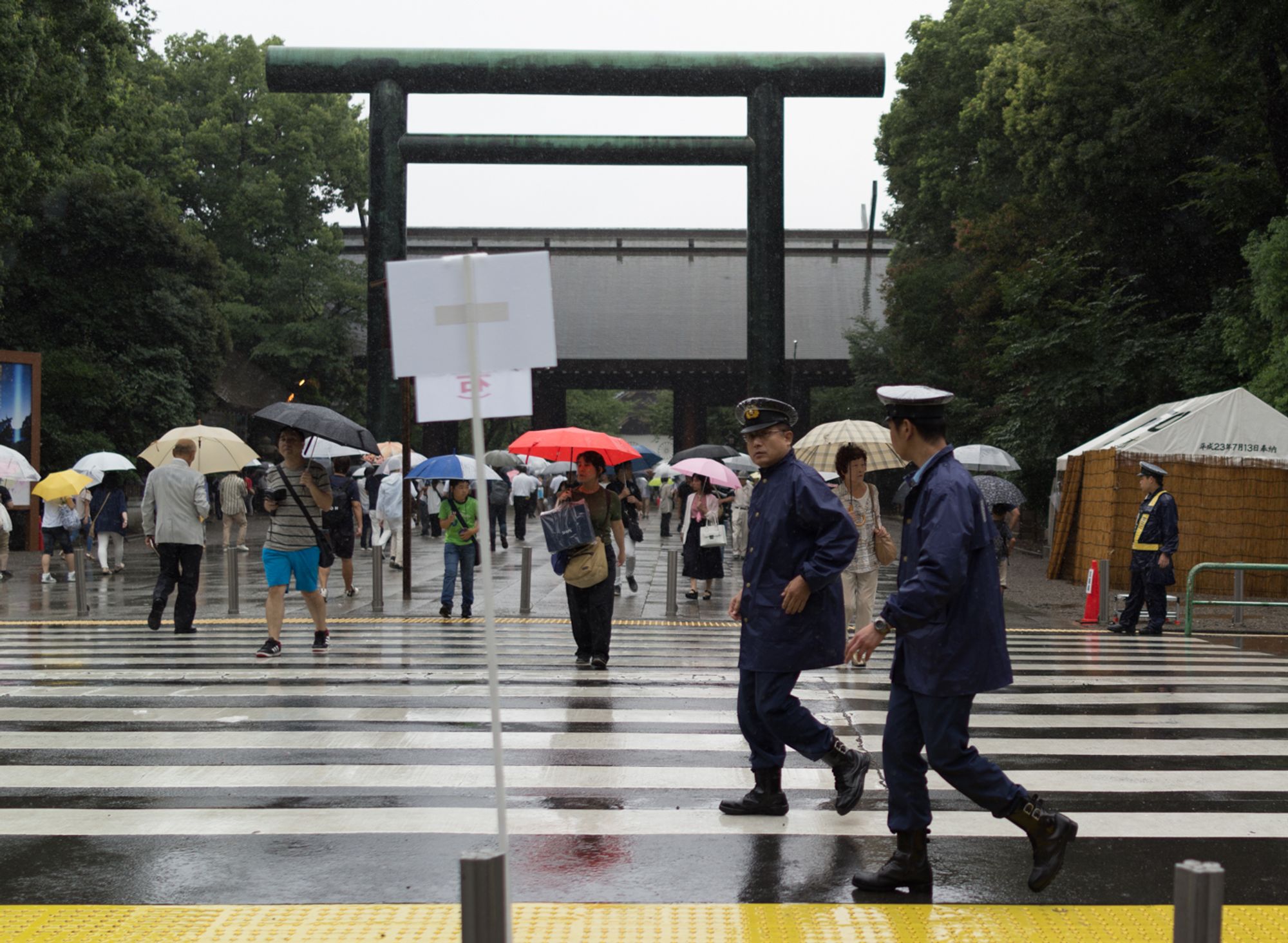
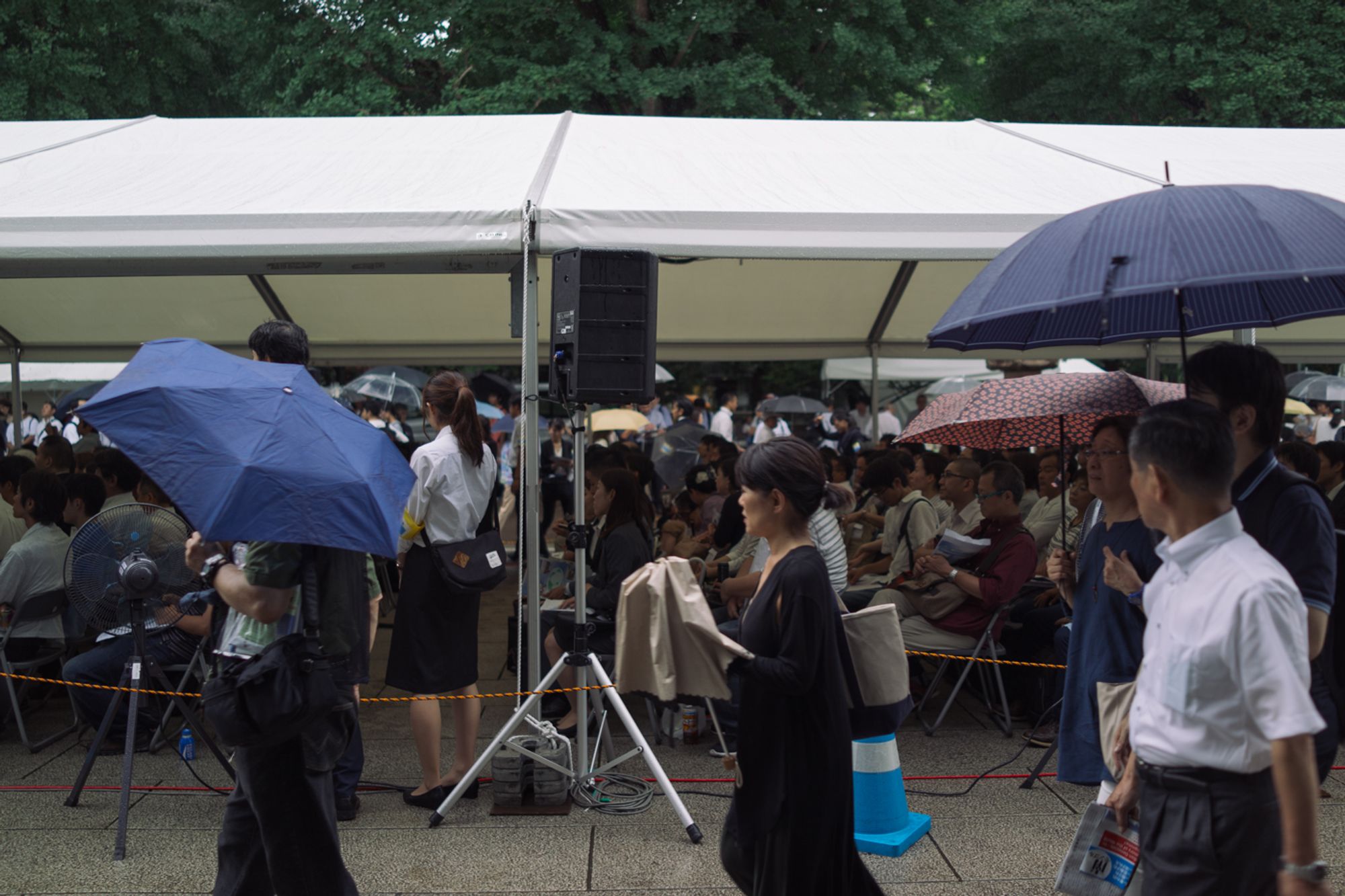
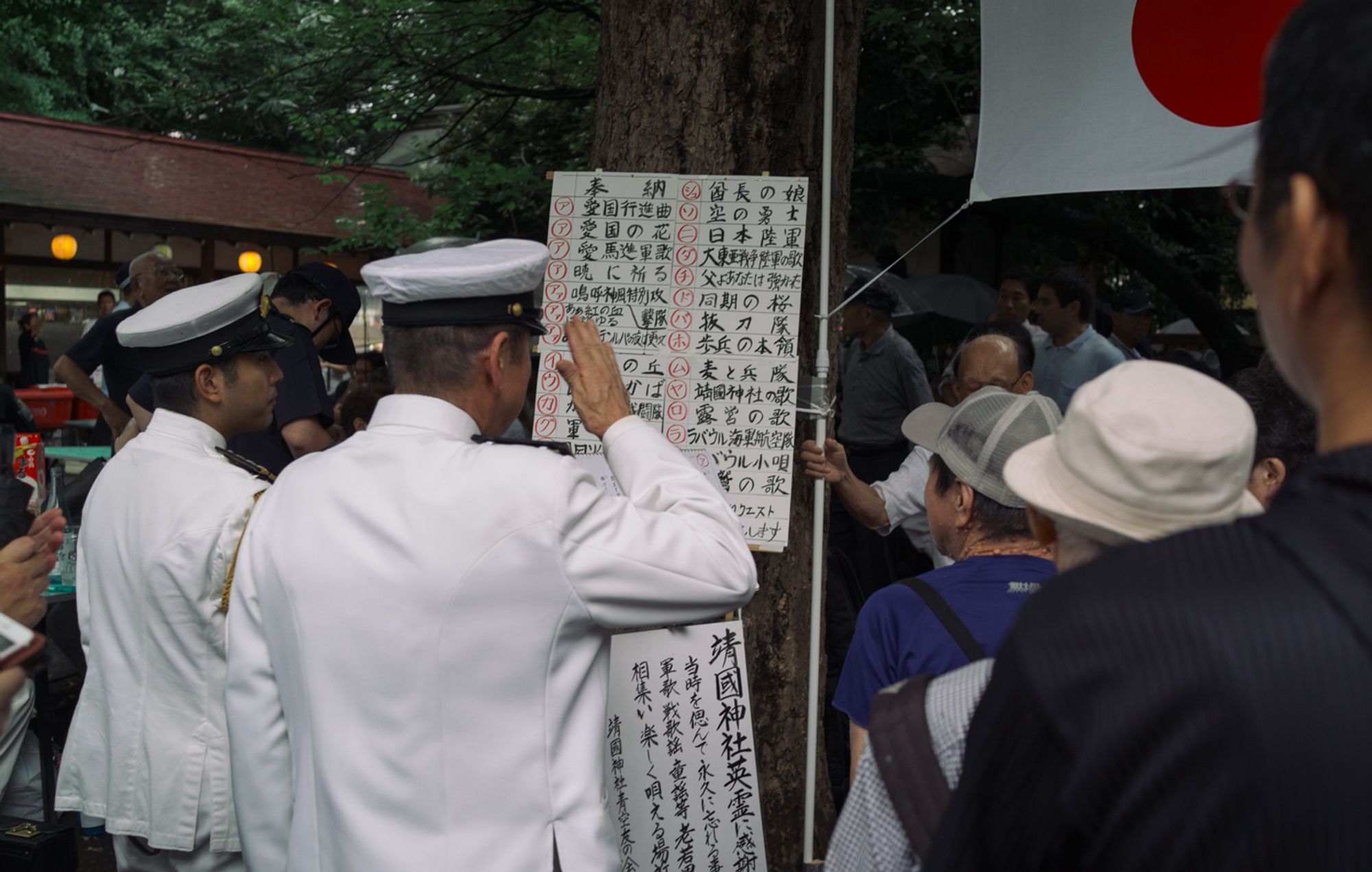
There was a gathering of nationalists hanging out, talking, and singing nationalist and war songs.
One thing I found surprising was how many Self-Defense Force personnel openly associated with right-wing nationalist groups. These groups insist on a revisionist version of history where Japan never started the war and never committed war crimes. They also advocate for a much more expansive military, directly at odds with the mission of the Self-Defense Force.
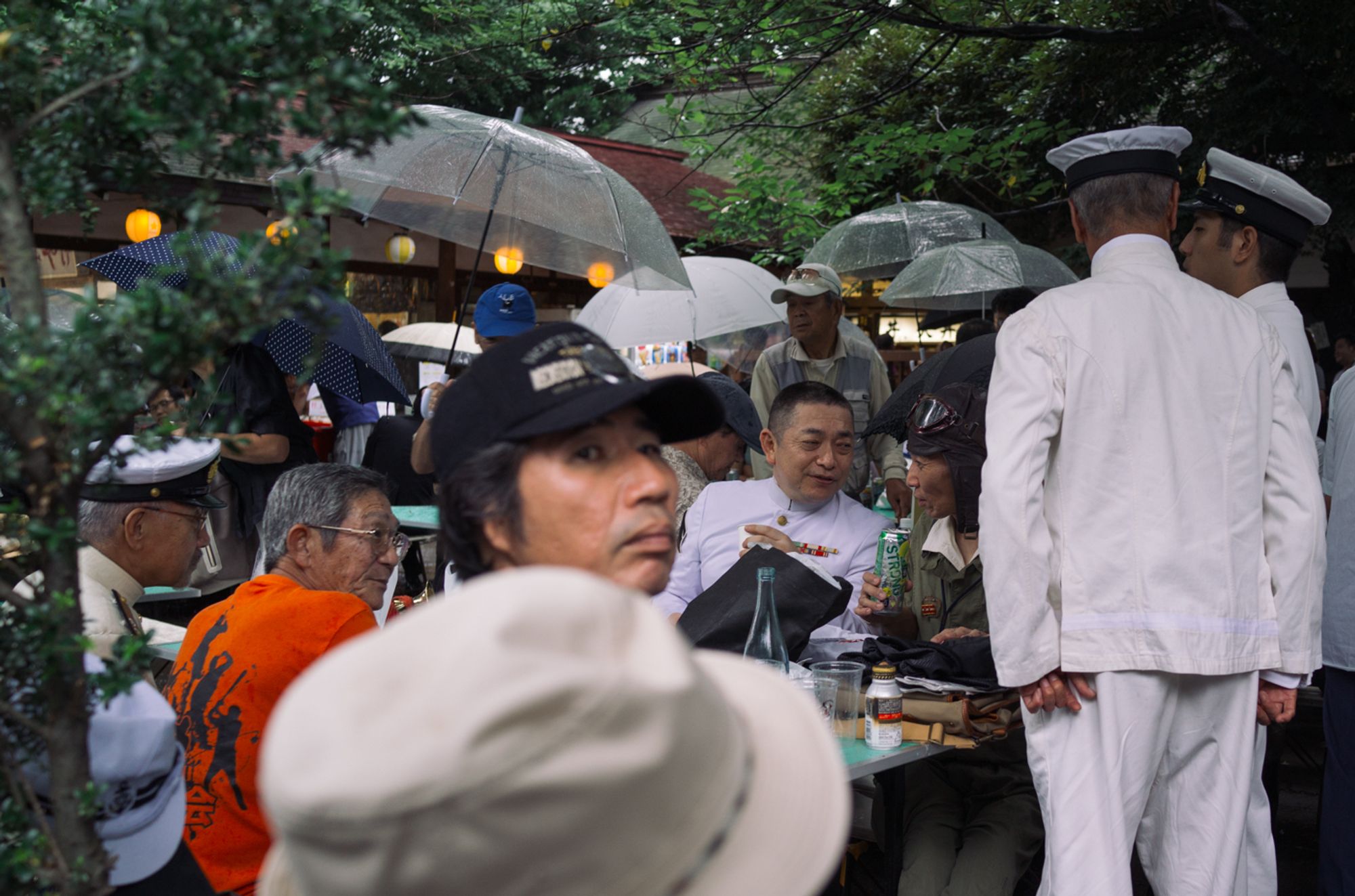
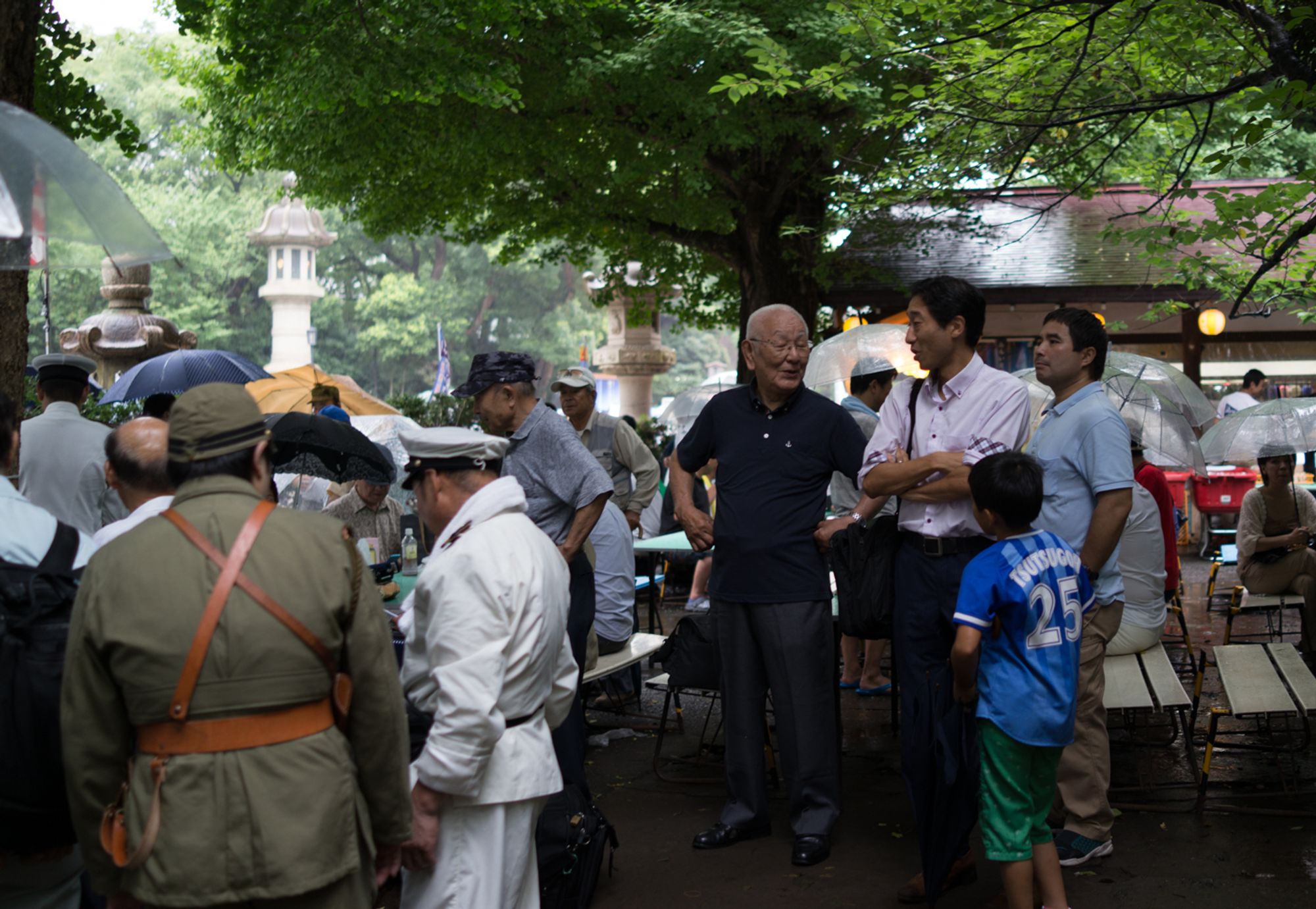
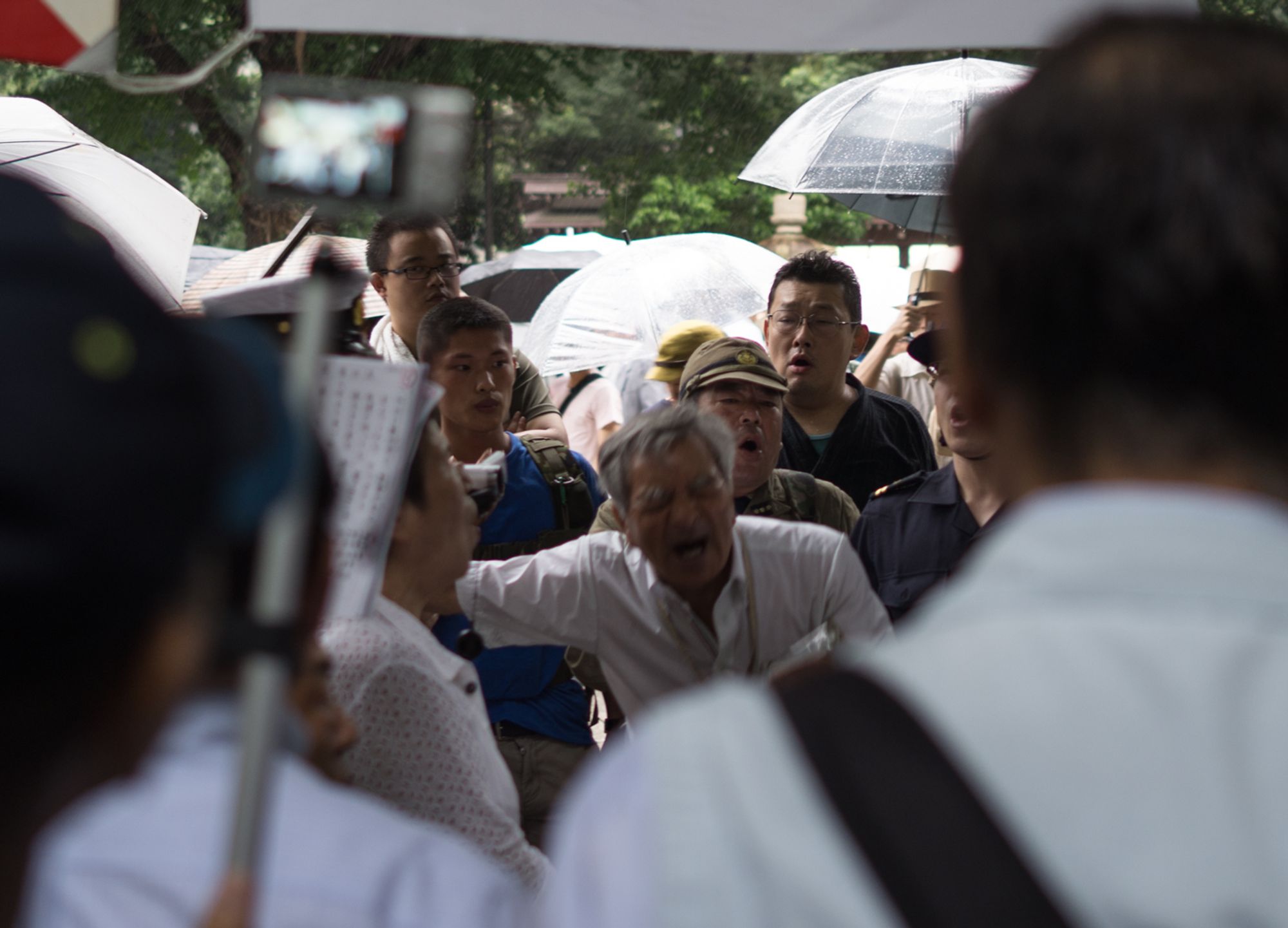
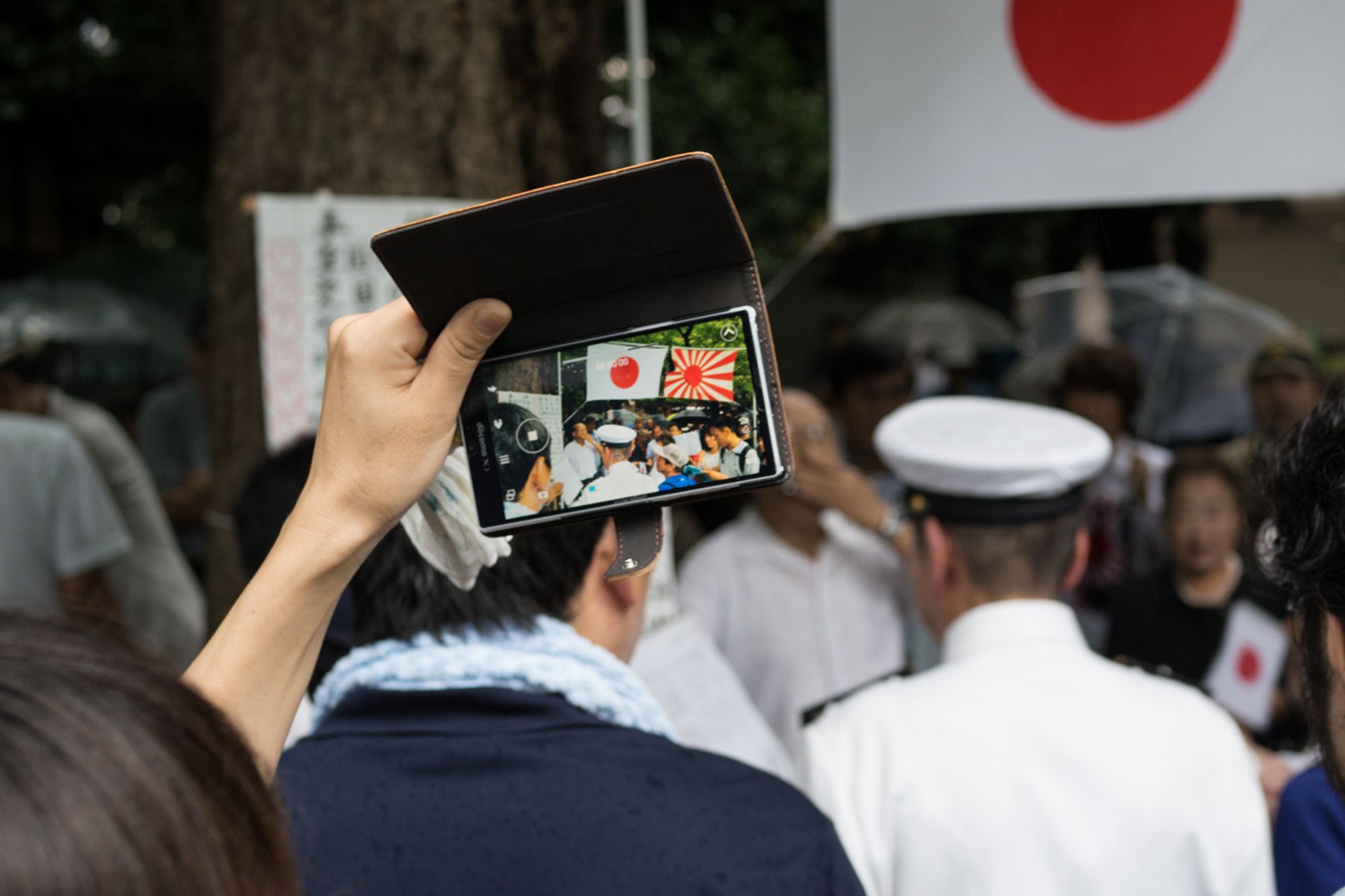
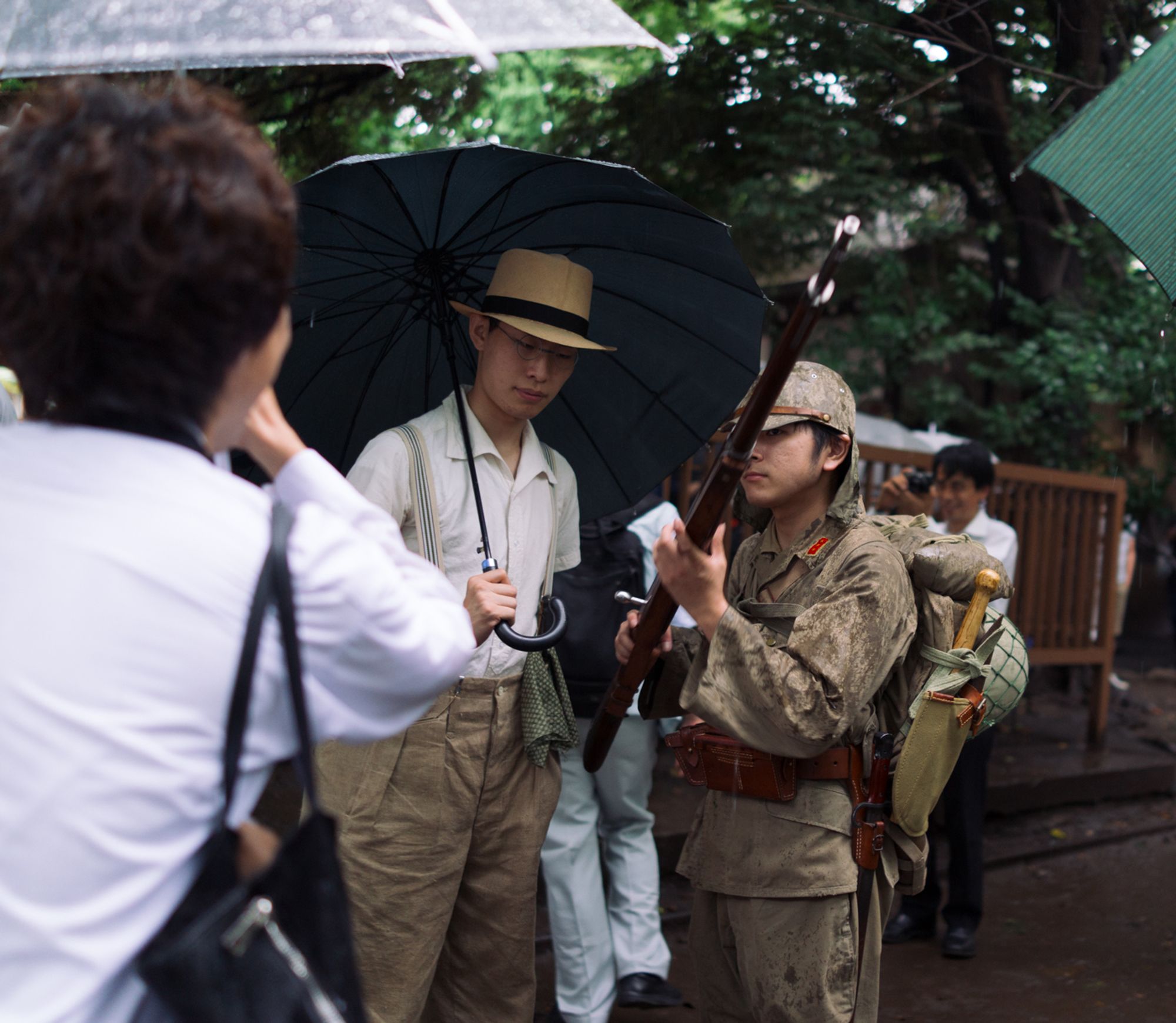
Out of nowhere, it started raining apocalyptically and I had to take shelter in the cafeteria, which also doubled as a souvenir shop. Many Yakuza factions, aligned with nationalist groups, came to Yasukuni that day. We were trapped in the cafeteria together for almost two hours.
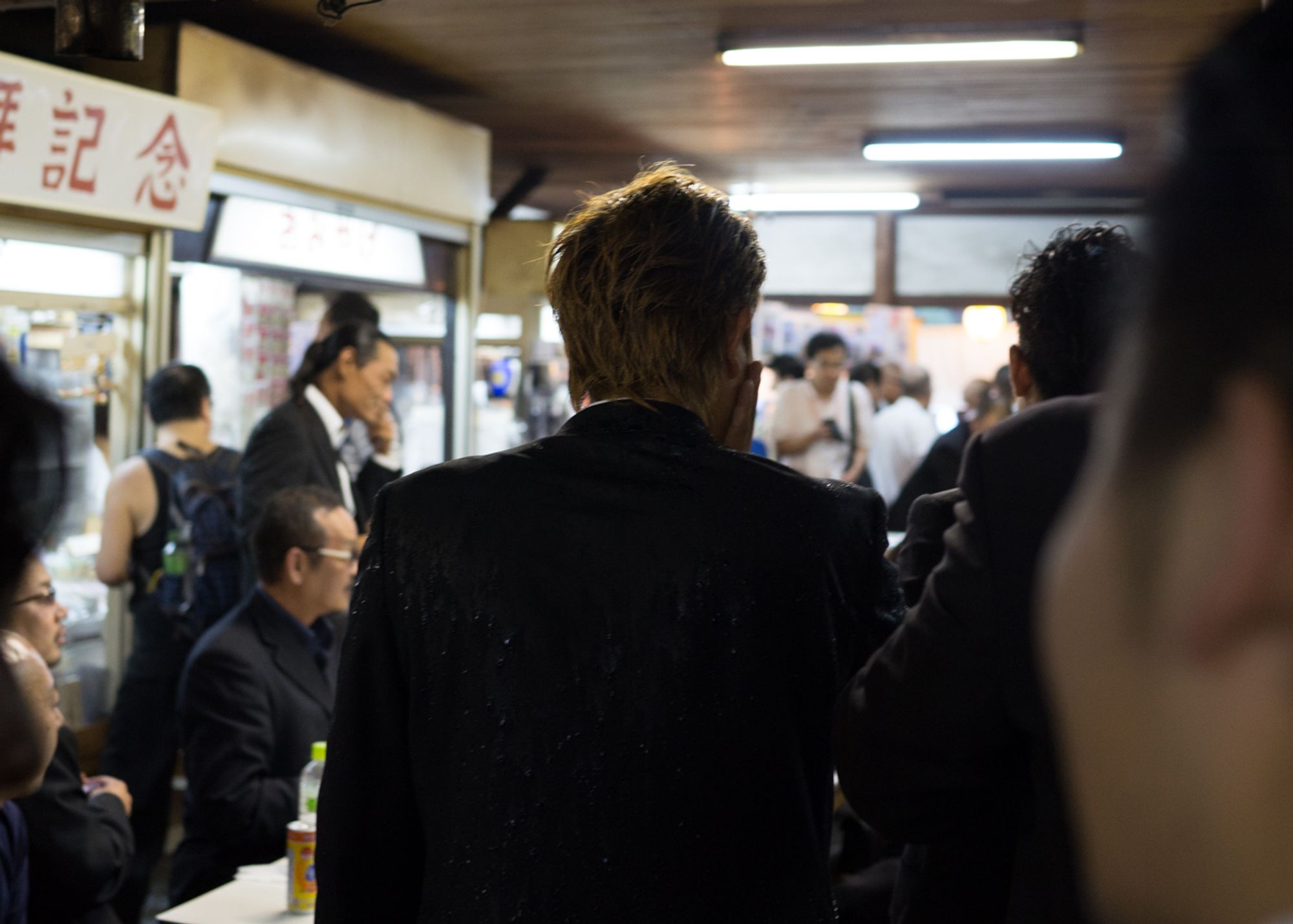
The Yakuza operates largely in the open. They have offices that politicians visit, they own companies, operate whole neighborhoods, and they are in every part of Japanese society.
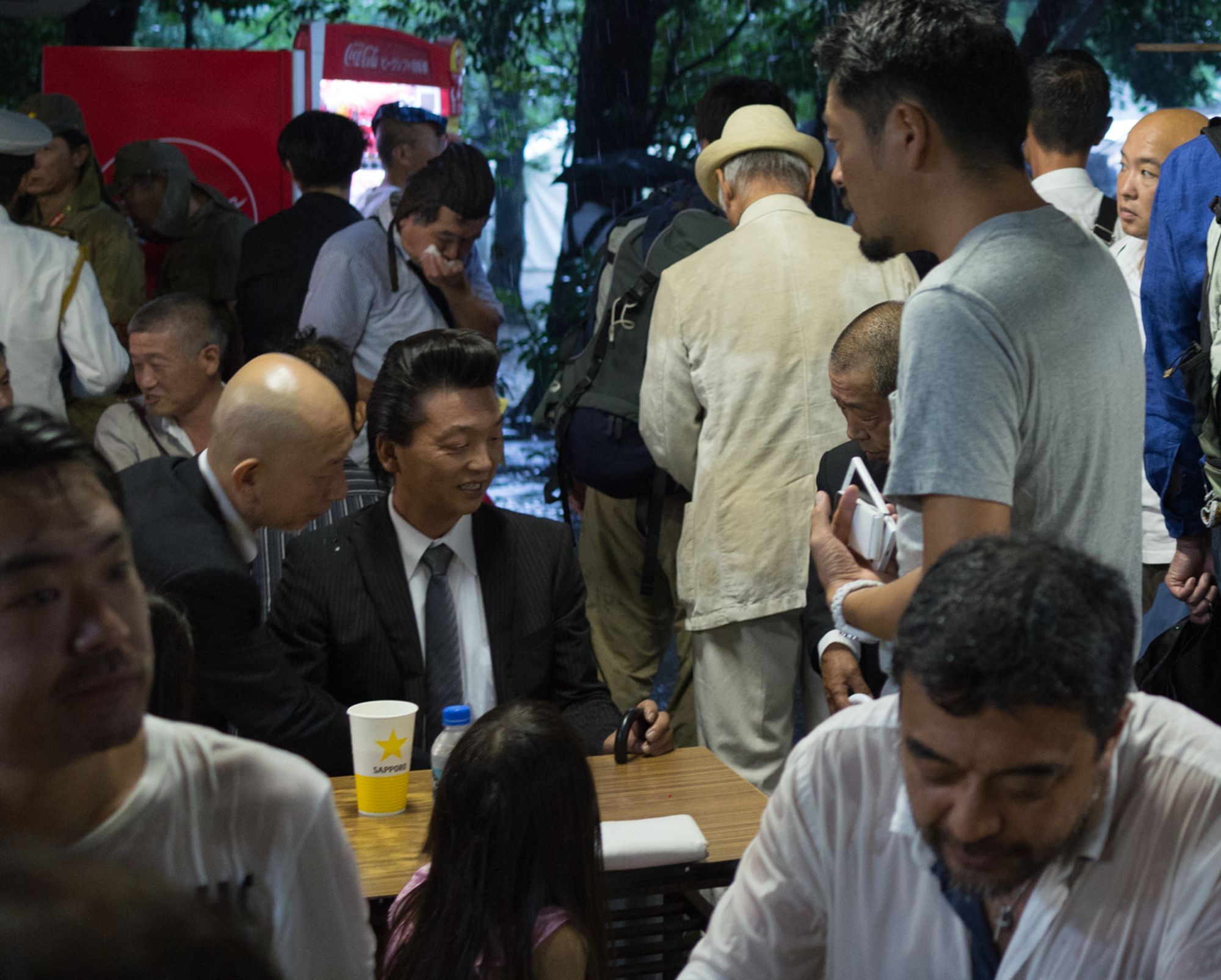
Knowing all that, I still found it surprising that everyone was just nonchalantly mingling with them. In fact, I think one of them made some room for me as I tried to find a spot to eat some yakisoba (the cafeteria sold overpriced food and beer).
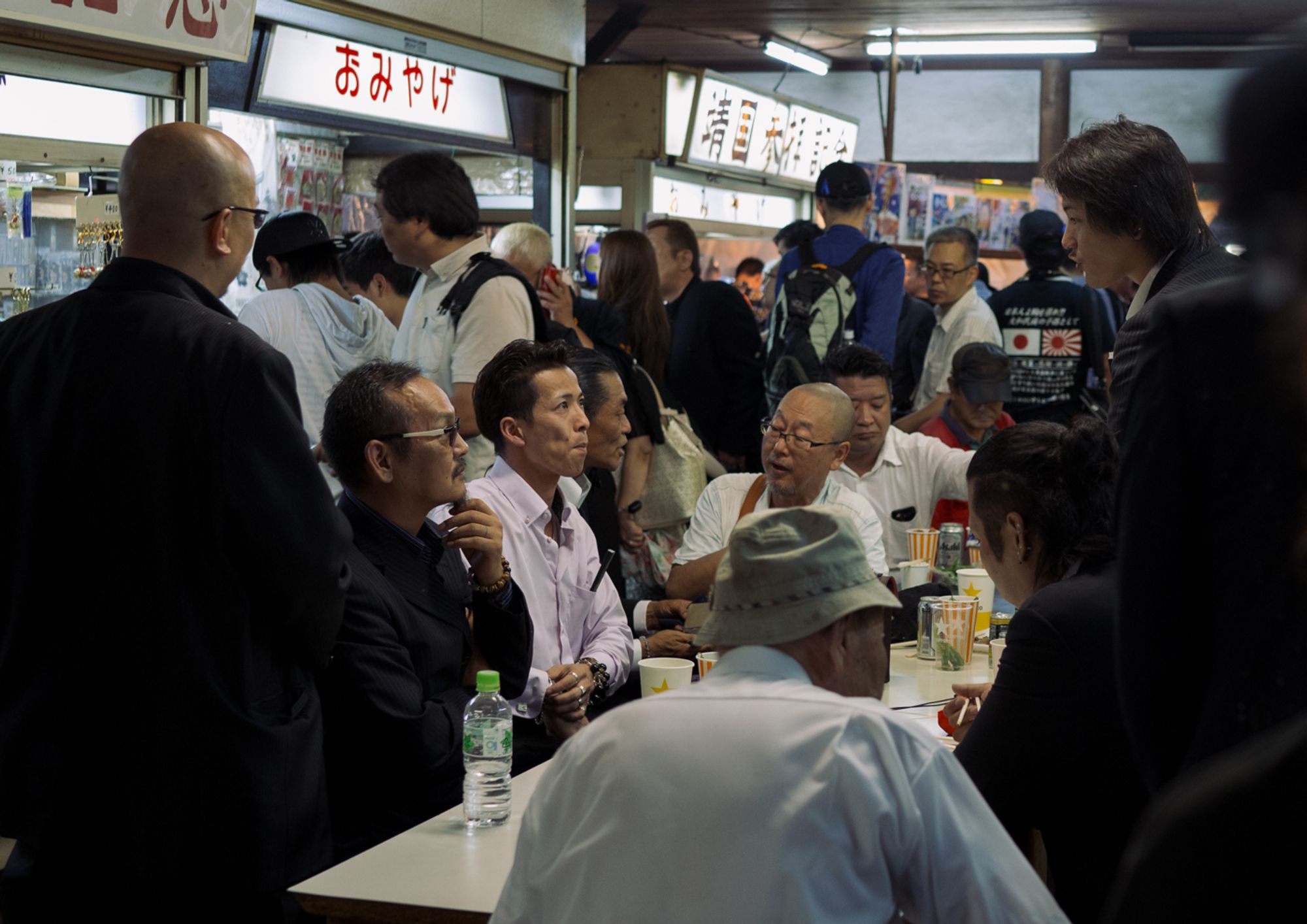
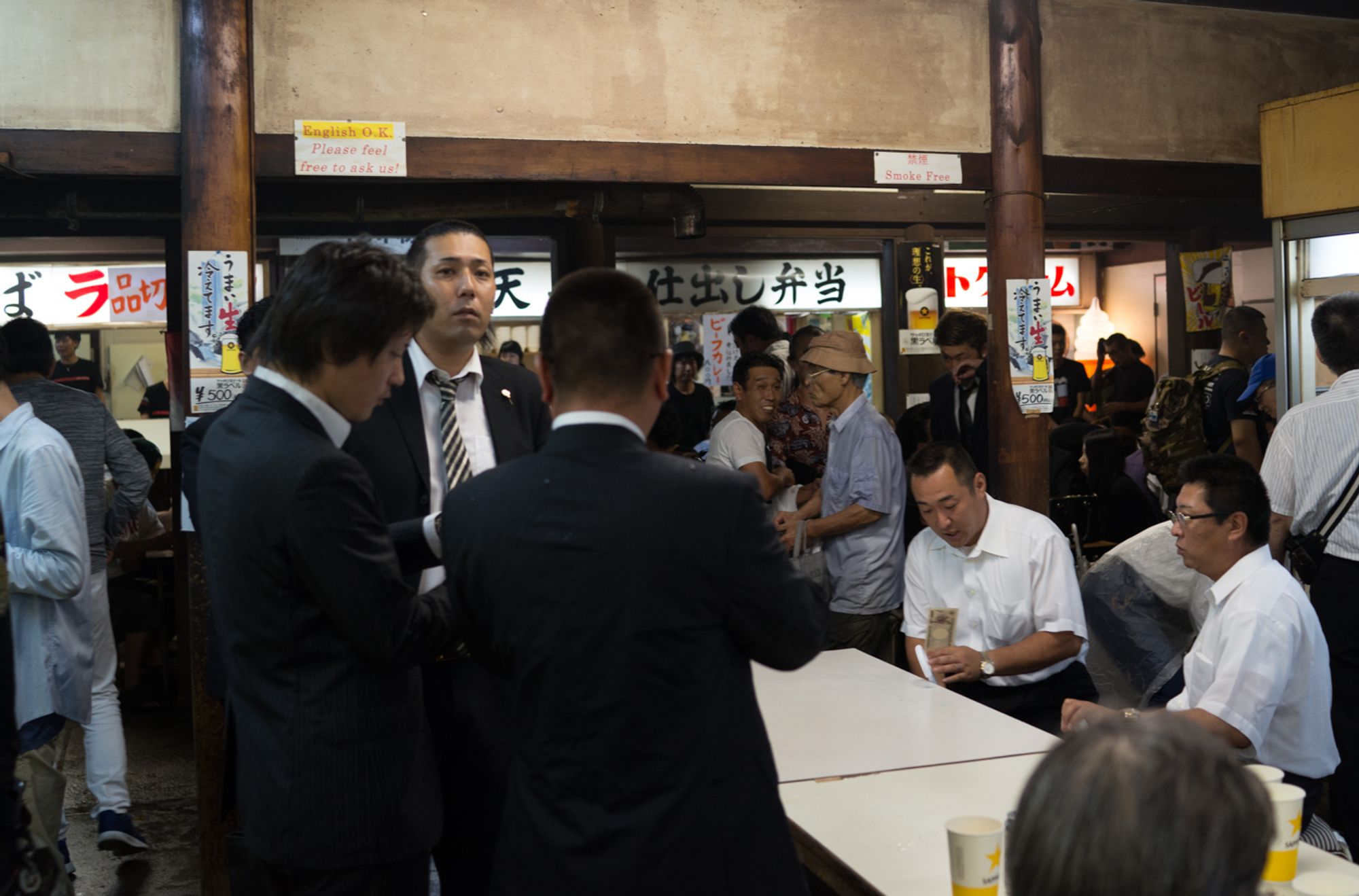
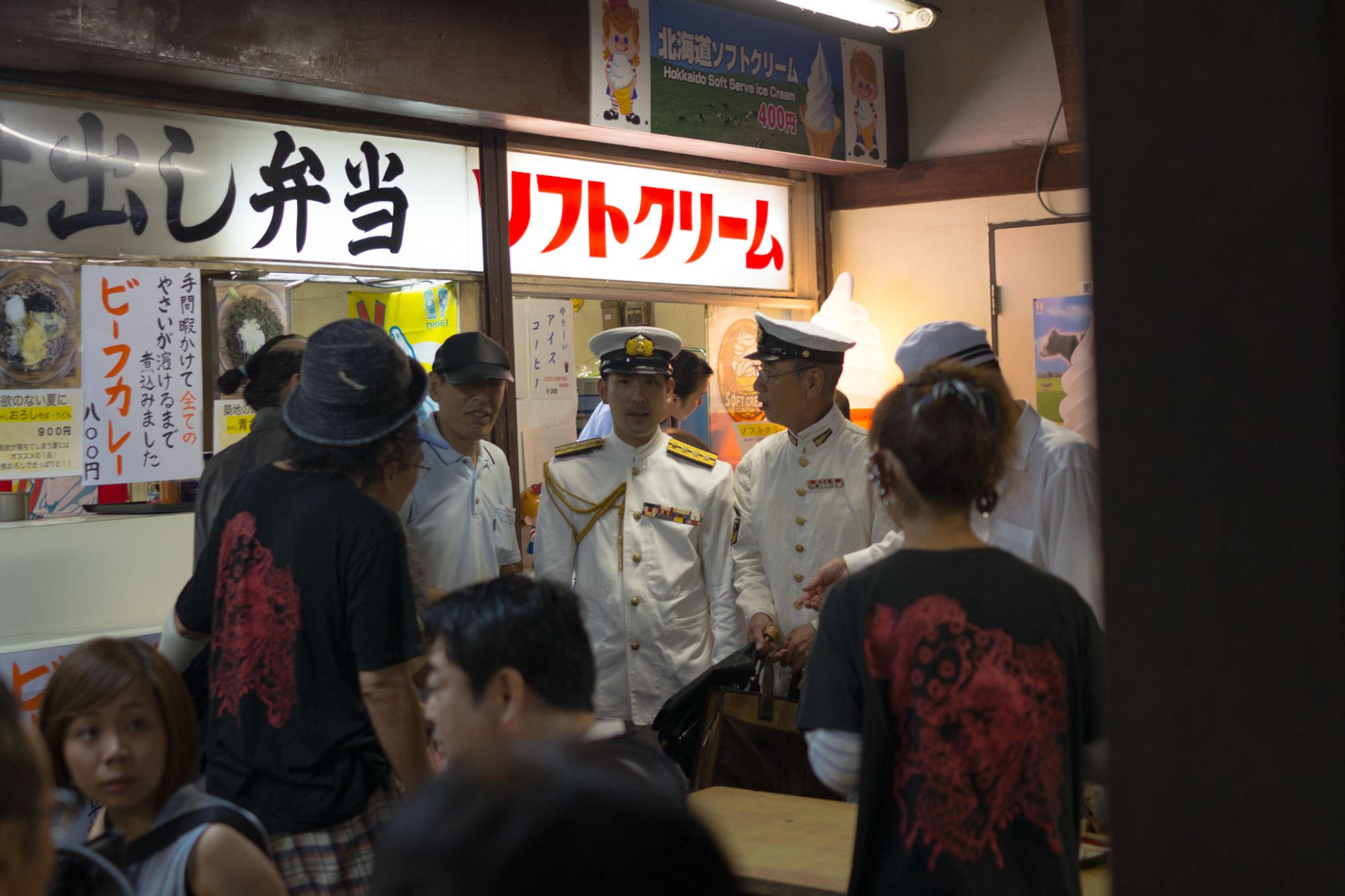
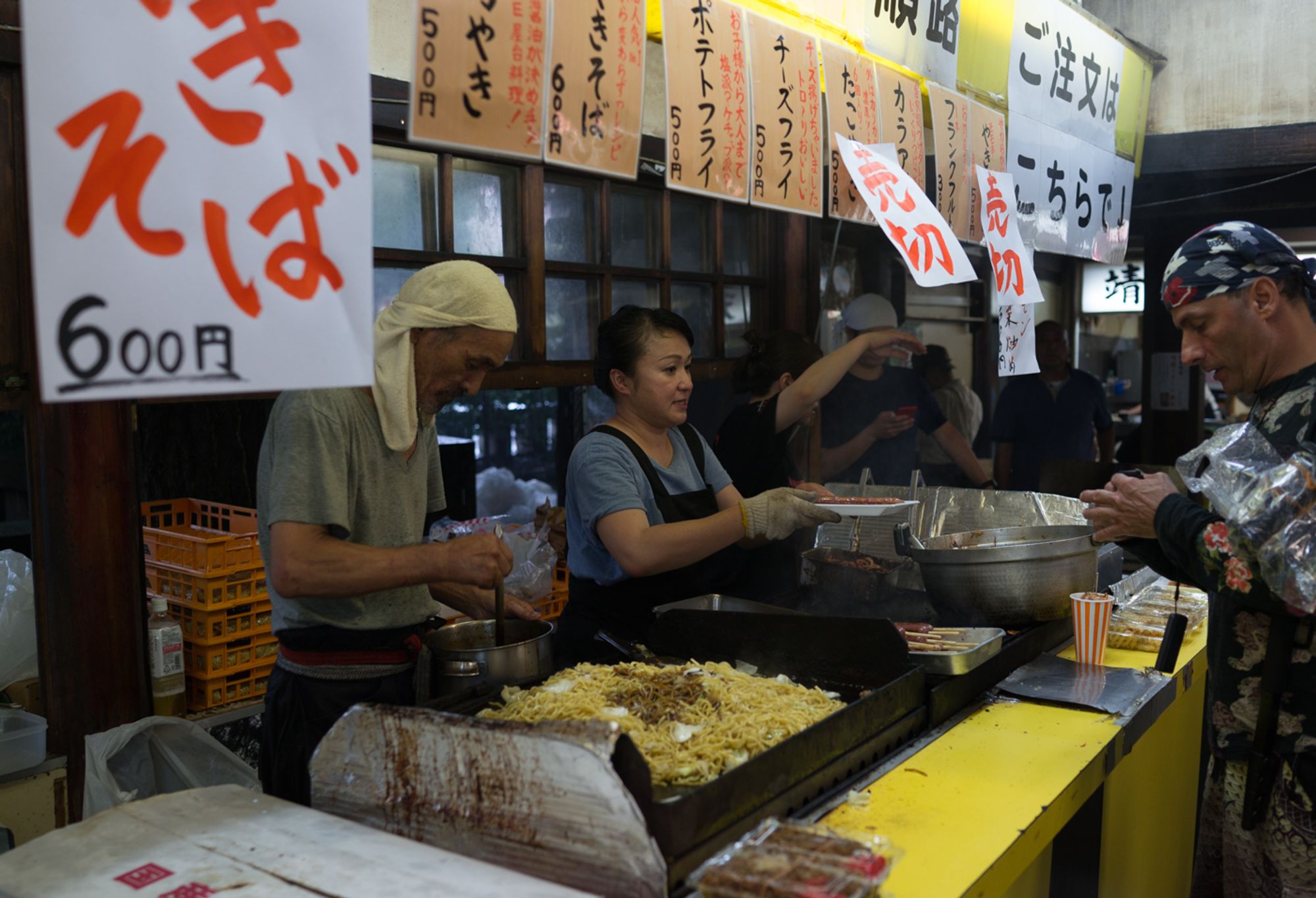
The cafeteria also had some pro-Abe posters. Amusingly, their Abe illustration of Abe made him look funny. Shouldn’t this kind of thing make him look flattering?
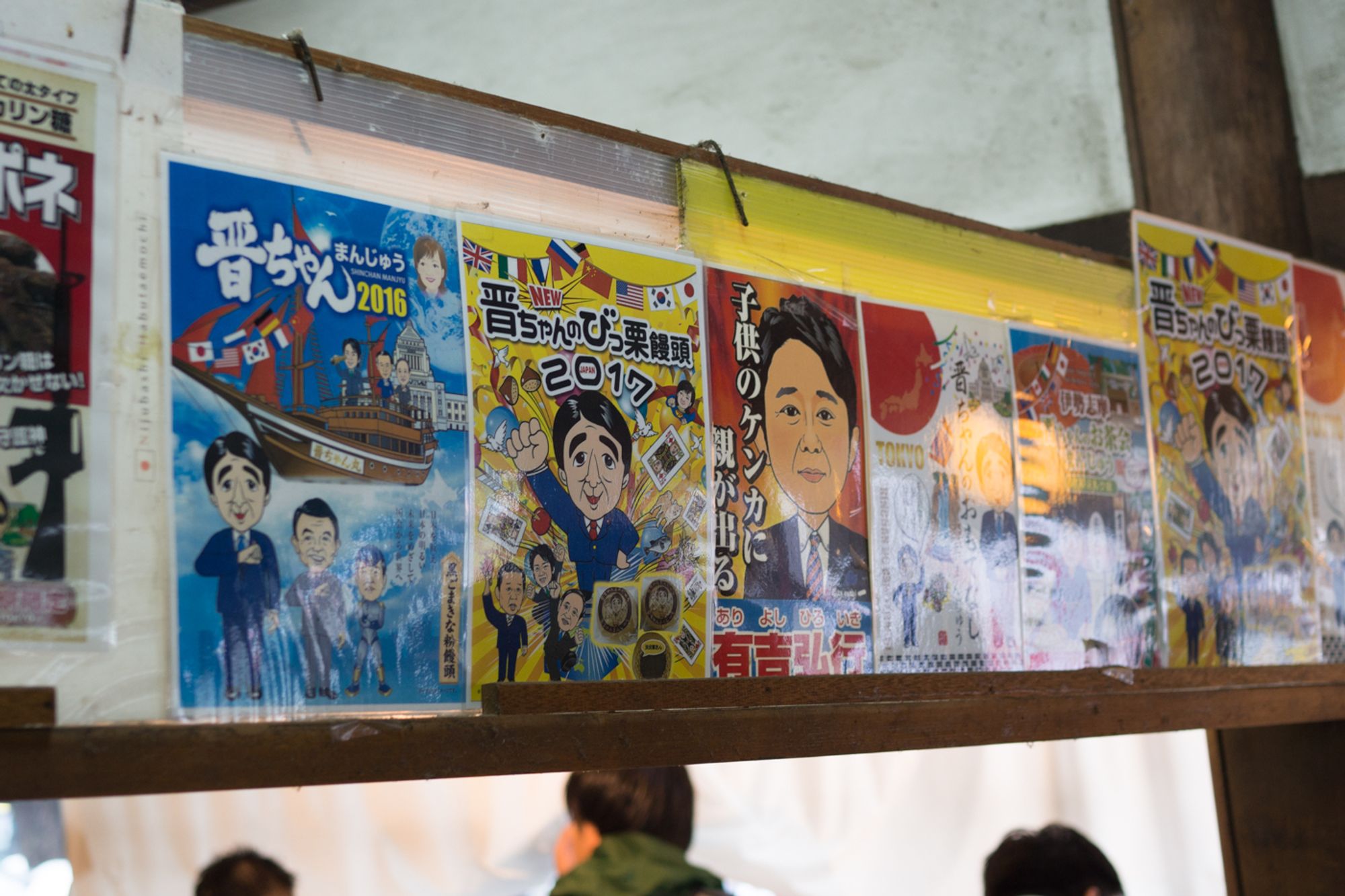
As the rain slowed from a storm to a constant drizzle, I decided to go line up to see the actual shrine.
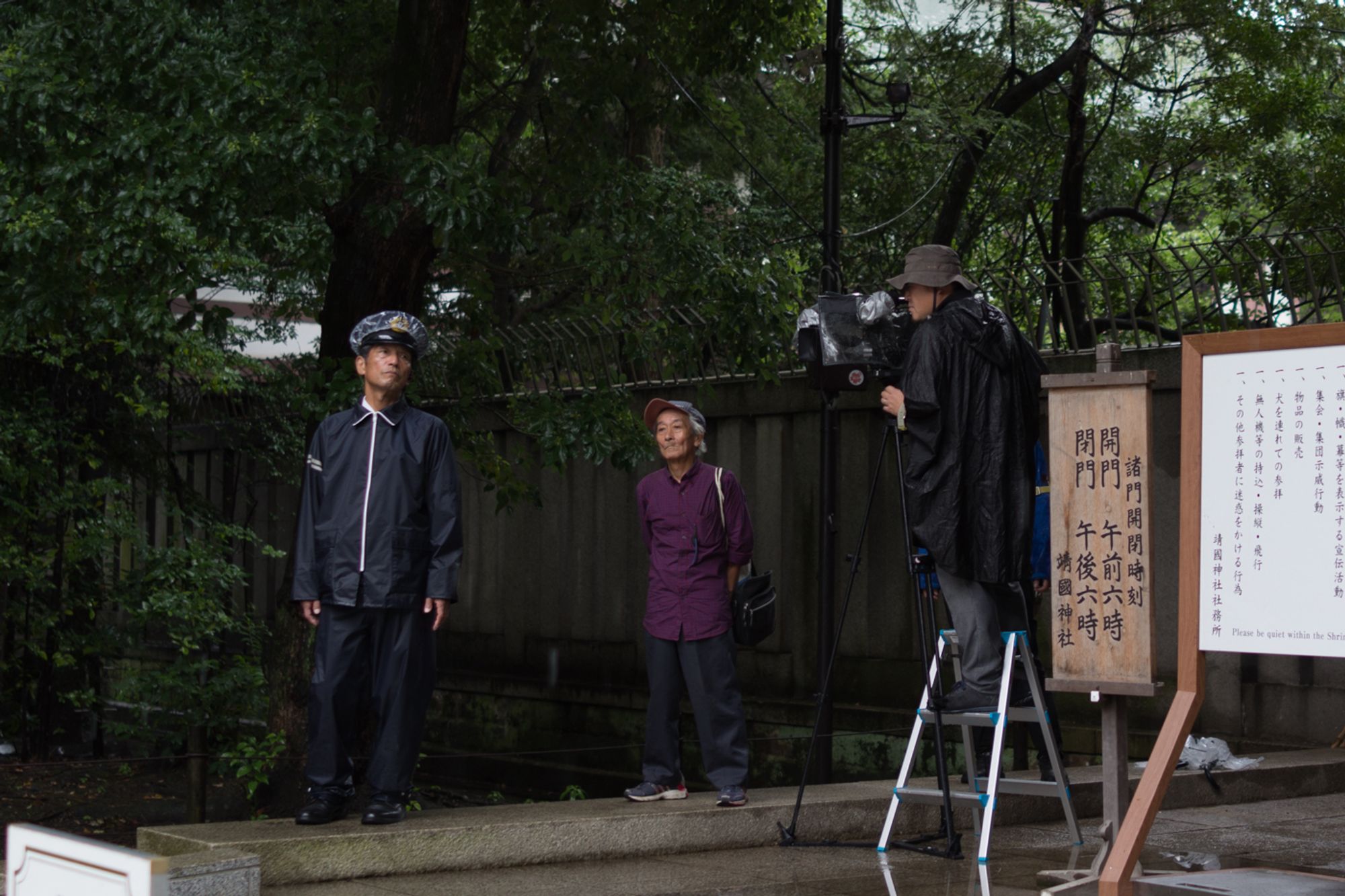
There were hundreds of people in line, and they were there even before the storm subsided. These are not old people who are products of the past, they are part of the younger generation who still fully subscribe to Japan’s pre-war philosophy.
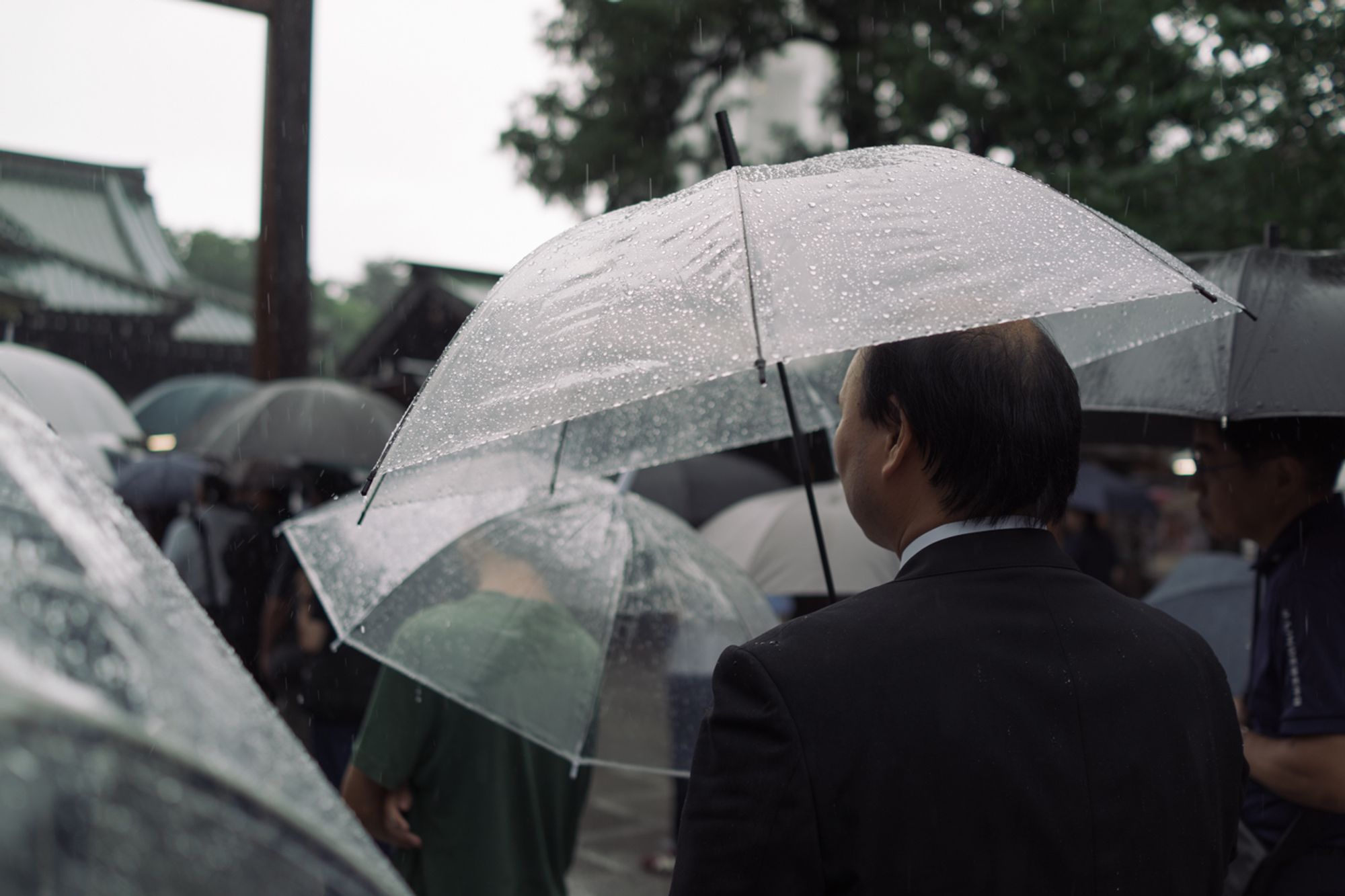
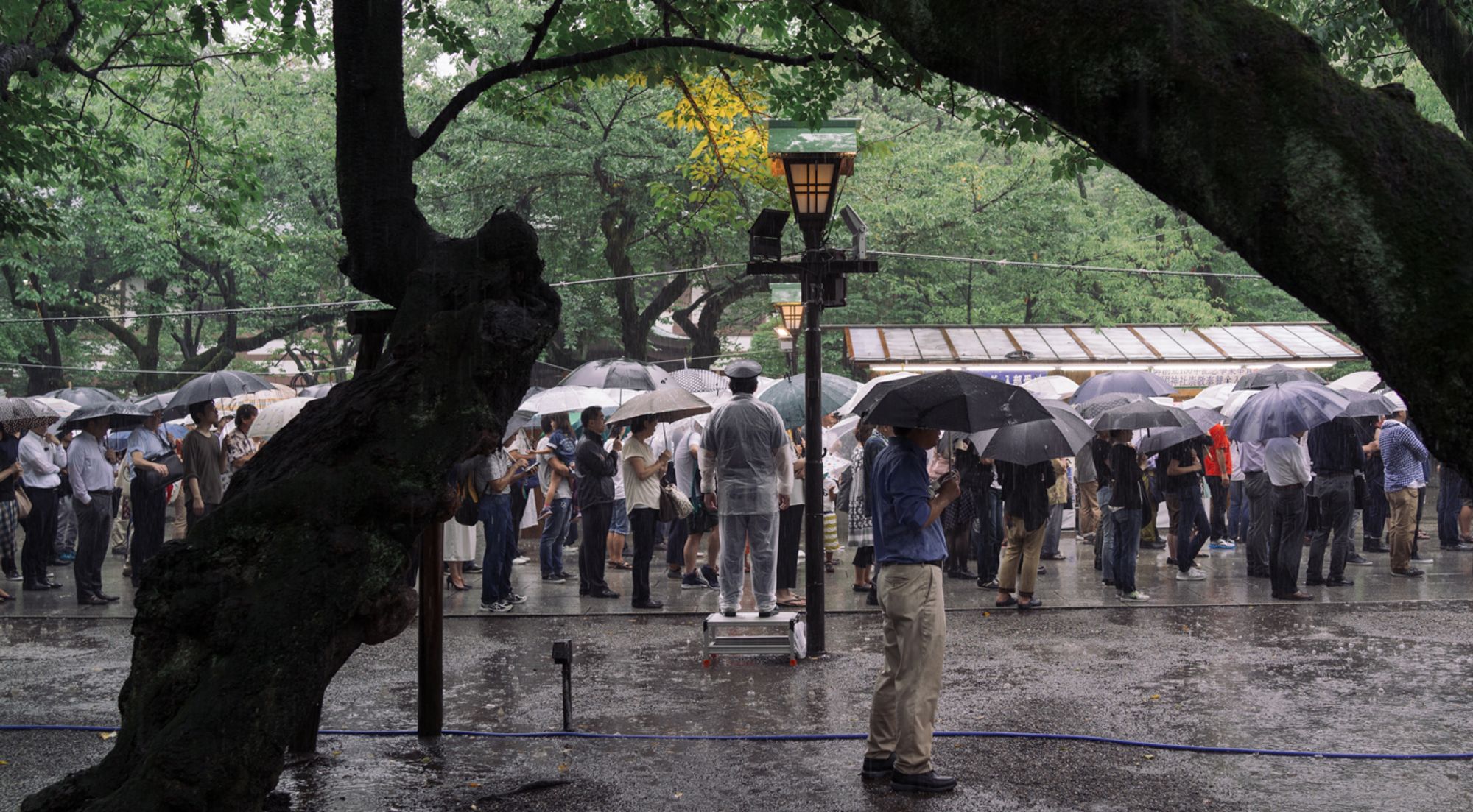
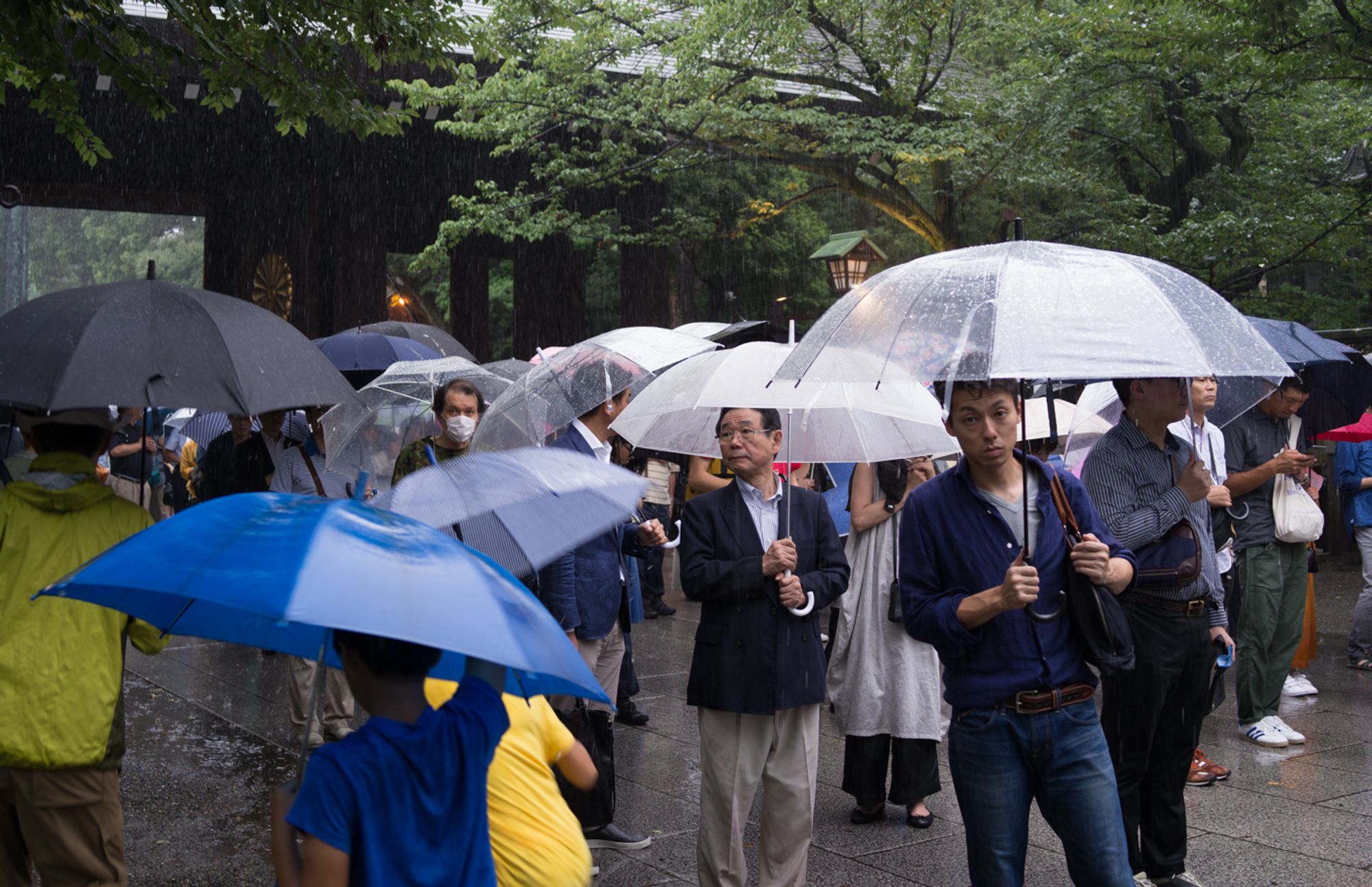
As I write this, many Asian countries are turning away from democracy and human rights to embrace more authoritarian regimes. In countries like the Philippines and Thailand, the masses went to the polls to vote their own rights away.
In Japan, Shinzō Abe is winning the fight to change Japan’s post-war pacifist constitution. This would lift restrictions on Japan’s military and would be a huge step backwards into the past.
What is old is new again.
Photos taken on August 15th, 2017
More on Yasukuni Shrine:
Japan Subculture Research Center’s Explainer Lowy Institute’s 15 August Photo Essay